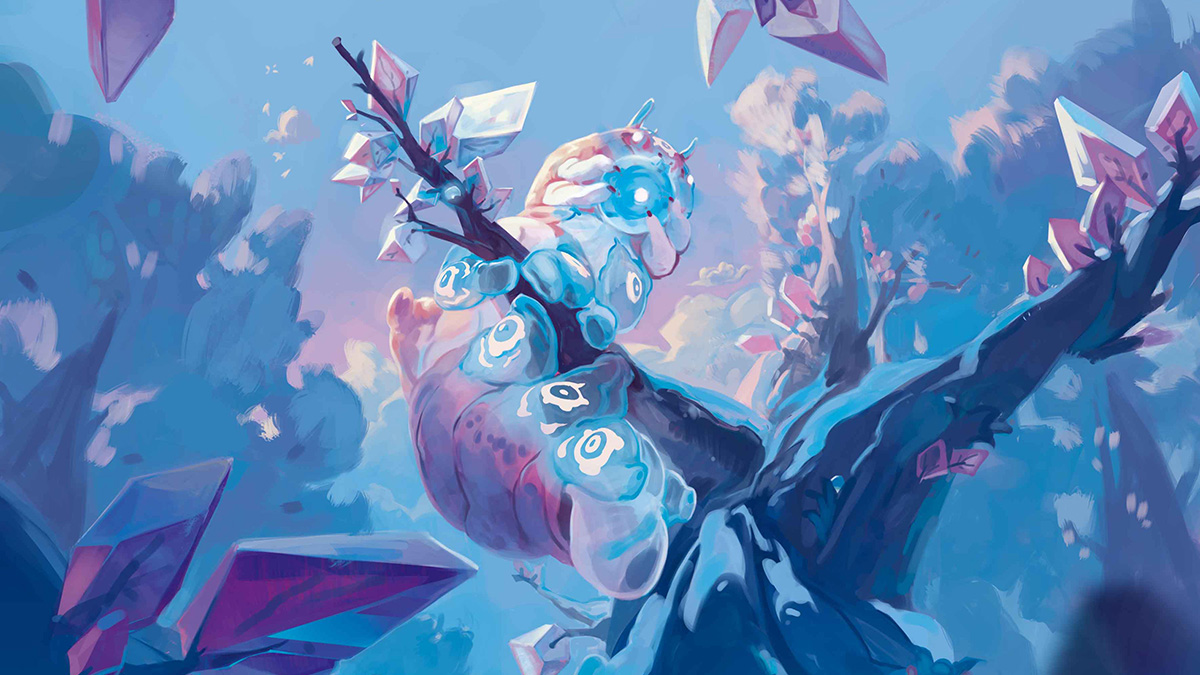
Mana Moths

Lore
March 20th, 2025
Reading time
393 AC
While exploring the winding tunnels of the Cerulean Hollow, an Yzmir mage happened upon a most intriguing cavity by pure chance. The secluded grotto, hidden from sight and far from the open air, was home to swarms of ethereal Moths. I was invited, along with other scholars, to lend my expertise on these creatures and their astonishing properties. Lacking a better taxonomic classification, we have named these insects Mana Moths. Indeed, the first trait we identified in these lifeforms is that they are not corporeal, but appear to be creatures of pure thought, much like Eidolons. Throughout their brief existence, these Moths continuously release an incredibly pure form of Mana into their surroundings. It is as if they exude Mana constantly, until they are entirely disembodied—an event that, for them, is the equivalent of death.
The report from the Yzmir mages who studied this phenomenon noted an exceptionally high concentration of ambient Mana within this cavity—comparable, almost, to that found in a mush nursery. It is as if their very being refines Mana, not to condense it into droplets like mush do, but into an air saturated with energy. During the few fleeting hours of their existence, the Moths flit about, embodying the idea of themselves. Yet, this idea gradually fades as the Mana that anchors them to the world dissipates. However, before their disappearance is complete, the Moths instinctively seek out a partner. When two Mana Moths meet, an explosion occurs—the vestigial idea of one merges with that of the other in unpredictable proportions. From this collision, physical eggs are formed and scattered by the blast, creating myriad facets and combinations derived from the two previous individuals.
![]()
These translucent eggs settle into the snow, invisible to the naked eye. There, nestled within the white down, larvae slowly emerge. I was able to observe their hatching under a microscope—a fascinating sight. In their caterpillar stage, they then converge toward trees or rocky surfaces that will later serve as their nesting grounds. Once they reach a branch or a stone alcove, the caterpillars use the ambient cold to weave a cocoon of ice, within which they undergo metamorphosis into a nymph. Their physical form dissolves into a nutrient-rich fluid, but instead of self-digesting like typical caterpillars to form butterflies, Mana Moths shed their physical shell entirely, becoming a mere conceptual entity. However, this state is, by nature, transient—the Mana that sustains them is continuously drained away, leaving them only a brief window to complete their reproduction.
It is intriguing to note that these lifeforms possess two distinct stages of existence: one physical in the early phases of their short lives, and one ethereal once they emerge from their chrysalis. I suspect that the Hakupopo are among their natural predators, blending into the snow to gobble up caterpillars as they traverse the snowy expanse. This may explain why Mana Moths tend to evolve in enclosed, sheltered spaces, ensuring the survival of their reproductive cycle. Even more fascinating is the discovery of Belisenki molts in these same areas. There appears to be a symbiotic relationship between these two species. The Belisenki embody the very concept of cold—an ability that would be impossible without the capacity to manipulate Mana. The most probable hypothesis is that Belisenki absorb the Mana diffused by the Moths to anchor the idea of cold within themselves. In exchange, they offer protection to the ethereal butterflies, much like ants tend to aphids in return for access to their honeydew.
Additionally, the analysis of droppings from the region’s endemic fauna has been quite revealing: the vast majority of local animals feed on the abandoned chrysalides of the Moths. Not only do these provide a concentrated source of nutrients, but I suspect that by ingesting them, the animals also absorb the Moths' pheromones. A Belasenka will perceive a penguin or a polar bear that has consumed a chrysalis as if it were a Mana Moth and will instinctively offer it protection. Perhaps if we, too, were to consume these nectar-laden cocoons, we could evade the Belisenki’s vigilance—or even place ourselves under their guardianship. I will report my findings to the high command in hopes of having this hypothesis tested as soon as possible. The Expeditionary Corps has been facing relentless assaults since we established the mountain base. If future expeditions can pass through unnoticed by the Belisenki, then I will know I am on the right track.
Naturalist Journal of Saskia Averina
March 19, 393 AC